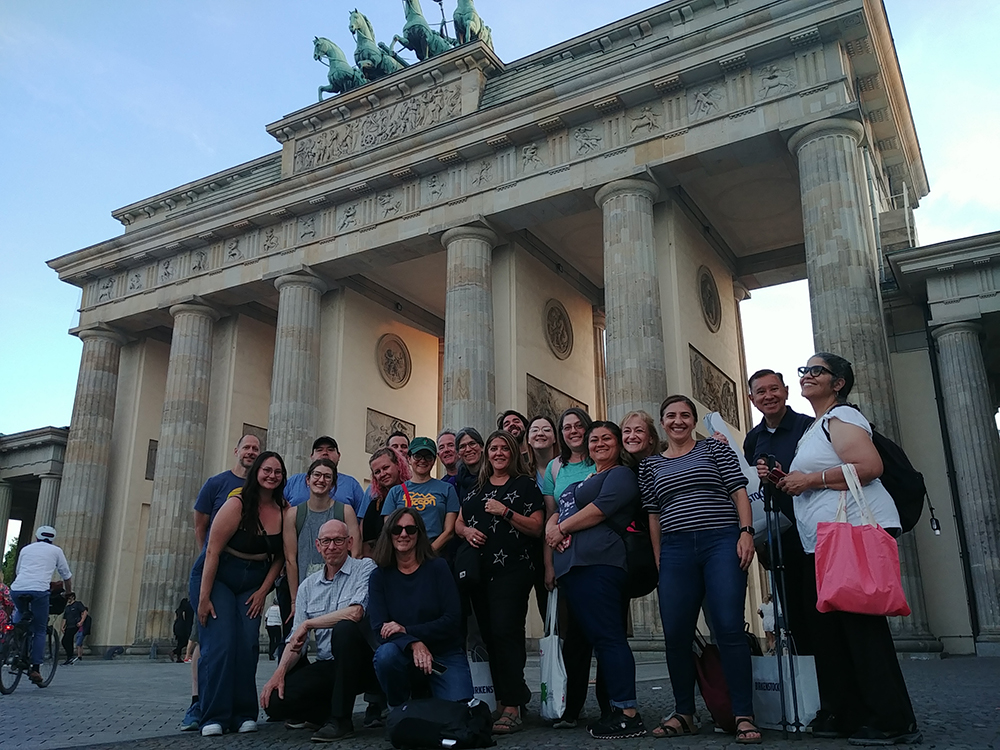Jaime Festa: Somehow, an email came to my email inbox and spoke to my history teacher heart. Although I am not in the classroom, I work to develop, adopt, implement and evaluate all of the curriculum in our district. I work very closely with English and social studies teachers and knew this would be an opportunity to ensure that the students who go to school in Lake Havasu City would be exposed to a deeper understanding of the Holocaust. I also work with rural schools across Arizona. As an advocate for rural education, I want to make sure that rural students have exposure to the historical understanding of the state-led, systematic persecution and killing of the Jews and other people deemed less than or a threat to the Nazis and connection to the lived experiences of those who were impacted by the Holocaust.
Jeffrey Mann: An email from the Martin-Springer Institute heralded this opportunity for me. I participated in a series of remote professional development sessions via Zoom during late spring of 2020 that the institute organized. I applied because it was a dream opportunity for me, strange as that may sound. I’ve read and studied this topic since I was a child, both formally and informally, and have always wanted to visit related sites in Poland and Germany. The chance to do so with Holocaust scholars and like-minded learners was too much for me to pass up.
Laura Romero-Ballesteros: I was part of the book group that read and discussed both books. I applied for various reasons. I have always believed that to truly understand and appreciate history, one must go where history took place. I felt both stories of Doris and Eduard where stories I wanted to learn more, and I felt in order to feel some degree of what they each went through I would need to follow their footsteps from start to finish. I had previously visited Auschwitz but never had the opportunity to visit labor camps or other concentration camps and wanted to see for myself what these terrible places looked like and get a sense of the trauma prisoners had to endure on a daily basis.
Katherine Scholler: I have attended the Annual Holocaust Teacher Training though the Martin-Springer Institute a few times since 2016, as well as various lectures hosted by the institute at NAU or virtually. So, I have been familiar with the work done by the institute since teaching in Arizona. Prior to the pandemic, I received an email about the trip and expressed interest in applying, but unfortunately it had to be canceled. I was excited to receive another email when the trip was rescheduled for summer of 2022, and I applied. Some of the best professional development I have participated in has been through the Martin-Springer Institute, so I knew it would be an incredible opportunity, and I was eager to apply. I also have had some of my students attend the community lecture programs, and I appreciate that they have that opportunity as well. So, I value the impact that the institute has on the community.
Amanda Johnson: I received an email about the “In the Footsteps of Survivors” study tour as a result of my participation in a range of other Holocaust education professional development workshops. I am incredibly grateful I did! I applied to the study tour to develop a deeper understanding of the Holocaust and make connections to the geography of place and people connected to the genocide. This experience could only foster better instruction and learning in my classroom.



